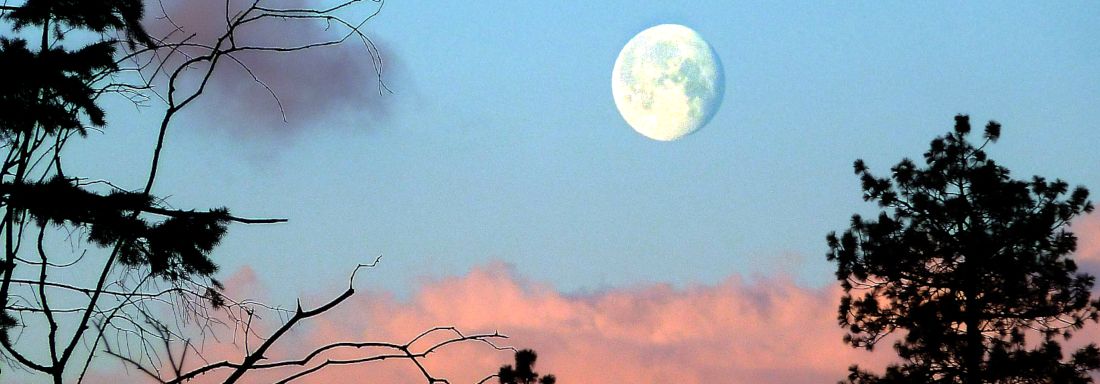

Winter had been a long, dreary affair, with a succession of snow, cold rain, ice and more snow. Come February, I was done with it, but it did not appear to be done with me.
Out of desperation and cabin fever, I concocted a plan to go camping. My nine foot tipi was small enough to carry in my sidecar if I could devise a way to carry the poles.
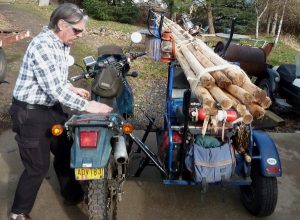 I went out to the shop and cut and bent some pipe, welding it together to form some racks, which I bolted to the sidecar. It took a couple of attempts before I stumbled on a position that would work, between the bike and the sidecar, and high enough the poles wouldn’t foul my handlebars.
I went out to the shop and cut and bent some pipe, welding it together to form some racks, which I bolted to the sidecar. It took a couple of attempts before I stumbled on a position that would work, between the bike and the sidecar, and high enough the poles wouldn’t foul my handlebars.
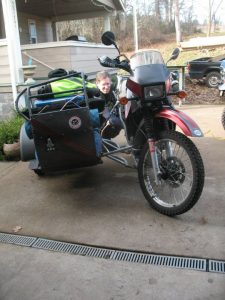 My brother was also chafing to get out, so I had no problem talking him into joining me for a snow camp in the mountains east of town. He packed his bike and met me at my house, where I had strapped the poles to the rack and loaded the tipi, provisions, and my own gear into the sidecar. We checked our oil and tire pressures and were ready to set off.
My brother was also chafing to get out, so I had no problem talking him into joining me for a snow camp in the mountains east of town. He packed his bike and met me at my house, where I had strapped the poles to the rack and loaded the tipi, provisions, and my own gear into the sidecar. We checked our oil and tire pressures and were ready to set off.
We crossed over Neal Creek and I turned right, onto Swyers Drive. The bike resisted. I pushed harder, forcing the handlebars over; I had to put my back into it, straining, willing the bike to change direction. My load was making steering extremely difficult. The poles were centered, so stability wasn’t an issue, but the weight was too high. Every corner was a struggle; it took all my strength to force the rig to turn. It was manageable if I kept my speed down, but we wouldn’t get far before I was tuckered out. I figured it would still work as we didn’t have far to go. We pressed on.
The pavement ended and we began climbing into the hills. A few drifts of snow remained in the shadows, but at this point the road was clear, rutted, and frozen hard. Bouncing up the steep, rough road rattled my poles loose. They slipped backwards several feet, transferring the weight aft and making the steering even more difficult. I pulled over and forced them forward, tightening the lashings as much as I could. This would be repeated several times during the ride.
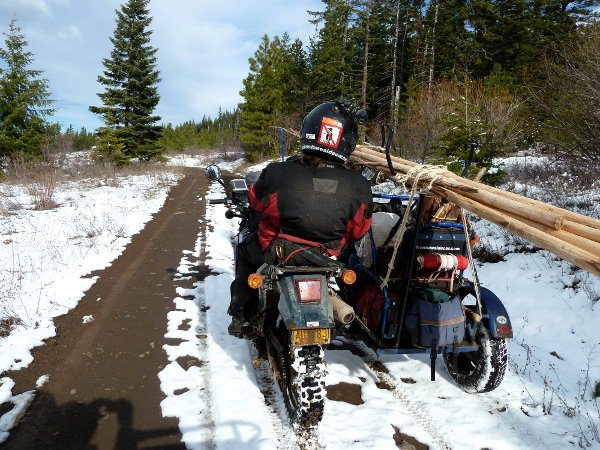
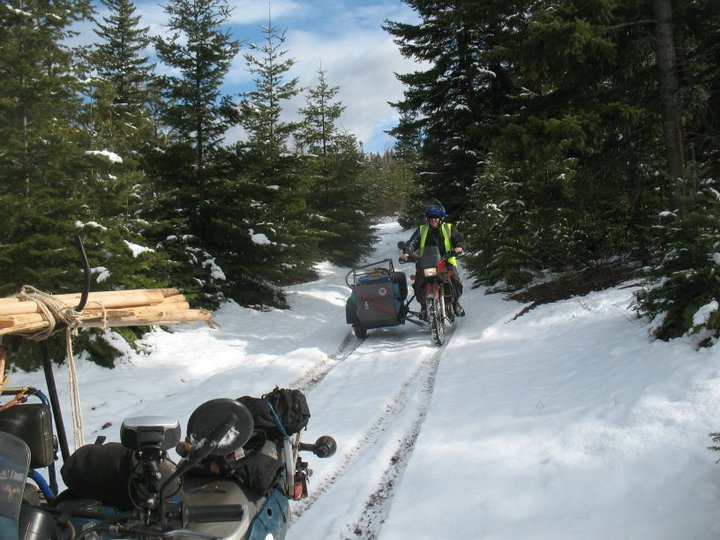
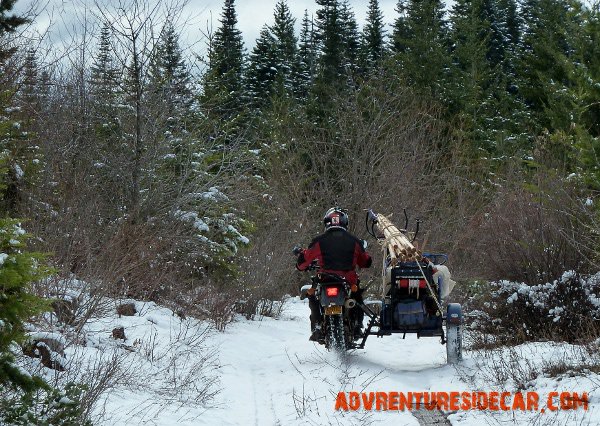
Soon we found patches of snow across the road, but it was frozen and supported the weight of our bikes, as long as we kept our speed up. We turned onto a smaller spur road; the snow covered it completely, still hard enough to traverse.
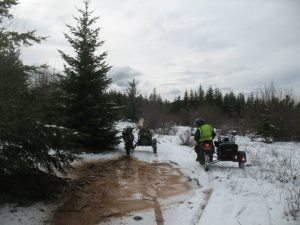 Suddenly I felt my bike drop beneath me and I was brought to an abrupt halt. The snow had hidden a huge pool of water, about a foot deep and twenty feet or so across, the surface frozen to a depth of two inches. I made it to the middle of the puddle before the ice gave way.
Suddenly I felt my bike drop beneath me and I was brought to an abrupt halt. The snow had hidden a huge pool of water, about a foot deep and twenty feet or so across, the surface frozen to a depth of two inches. I made it to the middle of the puddle before the ice gave way.
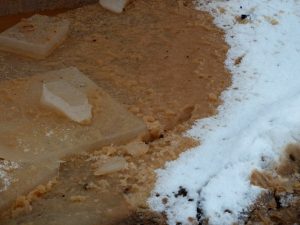 Unwilling to step into the frigid water, I moved back to the left passenger foot-peg, transferring as much weight as I could to the rear wheel. I wasn’t optimistic, but I worked the throttle and the clutch, getting the bike rocking. Finally, the rear wheel caught some traction and I clawed my way out of the hole and back onto solid ground. Miraculously, my rain-pants and Gortex socks had kept me dry.
Unwilling to step into the frigid water, I moved back to the left passenger foot-peg, transferring as much weight as I could to the rear wheel. I wasn’t optimistic, but I worked the throttle and the clutch, getting the bike rocking. Finally, the rear wheel caught some traction and I clawed my way out of the hole and back onto solid ground. Miraculously, my rain-pants and Gortex socks had kept me dry.
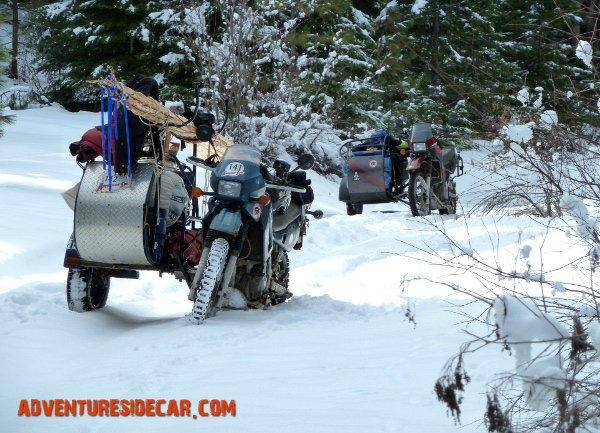
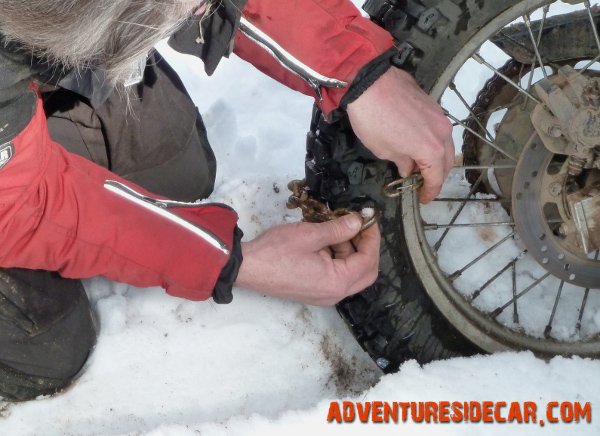
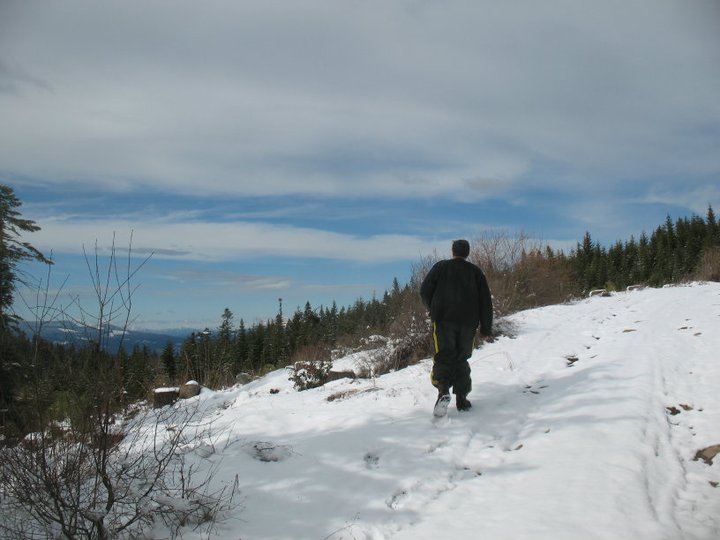
The snow got deeper as we continued along Snakehead Ridge. With the heavy load I was carrying, the bike was breaking through the crust and getting stuck. It was time to put the chains on.

The added traction got me another couple of miles, but I called a halt when we came to a dense stand of firs at the edge of a steep descent. Unsure of the road conditions ahead, we dismounted and continued on foot.
At the bottom of the draw was a pond and a small stream bordering the road. It looked like a good camping spot, but if the weather turned, we’d never get our machines back out of there. Reluctantly we returned to our bikes and retraced our path back to the main road.
Crossing Fir Mountain, we cut over to Huskey Road. It was getting late; the temperature was dropping. The air was so crisp it stiffened the hair in my nostrils. Low in the south the sun flashing between the trees cast long shadows across the icy ruts. I was feeling pressured to find a suitable campsite and get set up before it got dark.
We were a little lower now and there was less snow. Since I was encumbered by the tipi poles, I sent Andy down some side roads to scout for a place to camp. After a couple of false leads, he returned to report success. Wasting no time, I followed him down a short, dirt path to an old hunter’s camp at a dead end overlooking a draw.
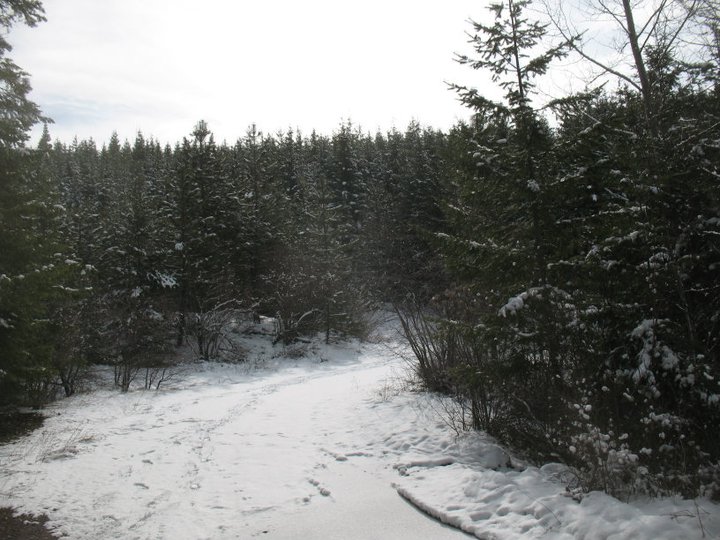

While I set up the tipi, Andy gathered some wood and started a fire. I hammered in the last tent peg as the sun was setting.
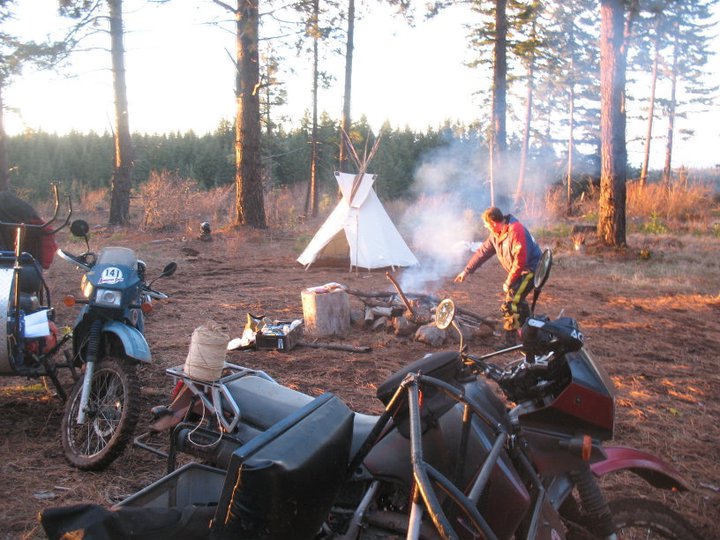

It was dark and ice was forming in our water jug when I got around to cooking dinner. As usual, I’d brought enough food to feed more than just the two of us, but I had a feeling we’d need the extra calories to keep warm. We had fried corn pone and a cabbage stew filled with onions, vegetables and kielbasa, washed down with Dead Guy Ale.

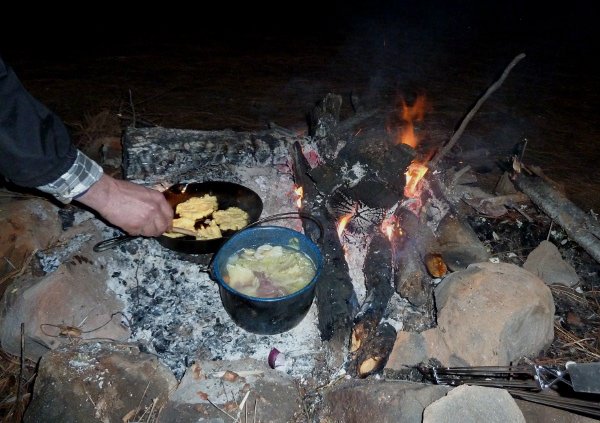
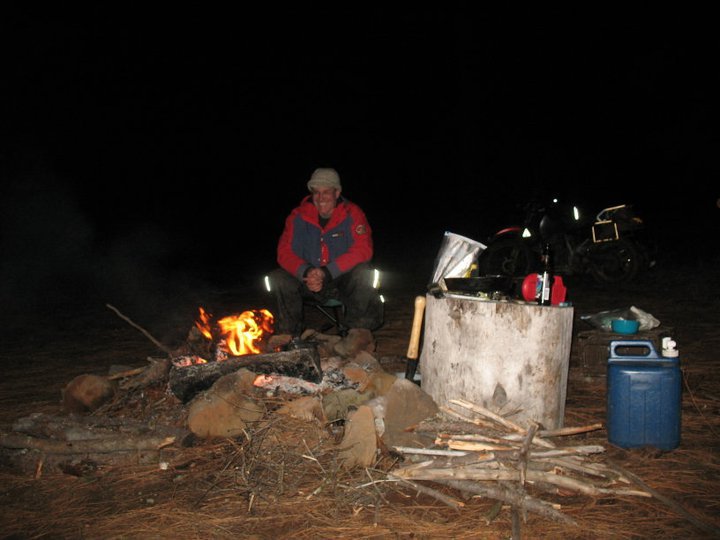
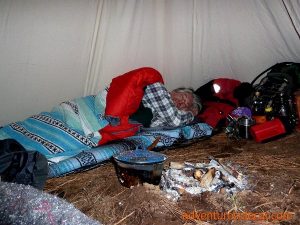 After dinner we locked our dirty dishes in the trunk of Andy’s sidecar and latched the rest of our food in a steel bear box. Kindling the fire inside the tipi with a shovel full of coals, we retired for the night.
After dinner we locked our dirty dishes in the trunk of Andy’s sidecar and latched the rest of our food in a steel bear box. Kindling the fire inside the tipi with a shovel full of coals, we retired for the night.
We stacked wood next to our beds; when the fire died down the cold would wake us and we’d toss another stick on the embers. It didn’t take much of a fire to make the little tipi warm and cozy. Unfortunately, it also didn’t take much smoke to fill the tipi. When the wind backed or a damp piece of wood began to smoulder, an acrid, choking cloud came right down to the floor, burning our eyes and threatening asphyxiation. We smelled like a couple of smoked hams by the end of the weekend.
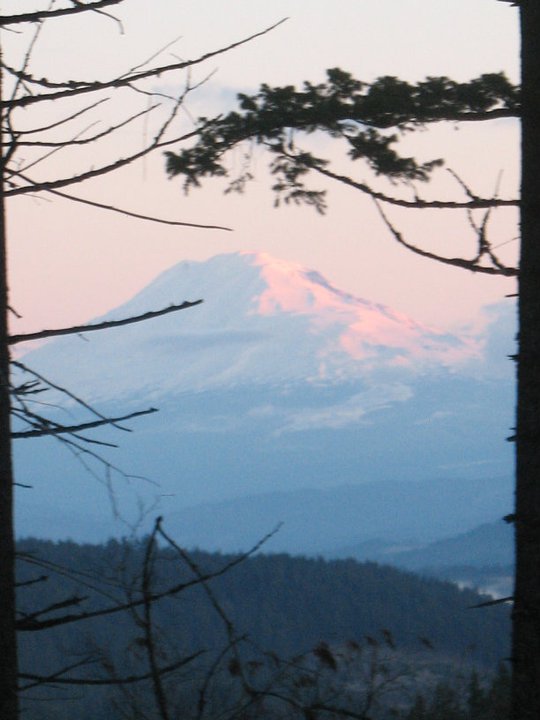
I awoke in the gray light of dawn to a cold fire. The temperature inside the tipi was well below freezing. I crawled outside to take a leak and watched the sunrise bathe Mt. Adams with a soft, pink glow. The moon hung like a ghost in a pastel sky.
Andy grumbled when I insisted he get up to admire the morning. He took a couple of photos then dived back inside the tipi. The water jug was frozen solid. There would be no coffee until it was thawed.

Andy got a fire going and the inside temperature came up to 60f. We set the jug near the fire and as soon as it would pour, filled our kettle and the coffee pot so we could start the morning properly caffeinated.

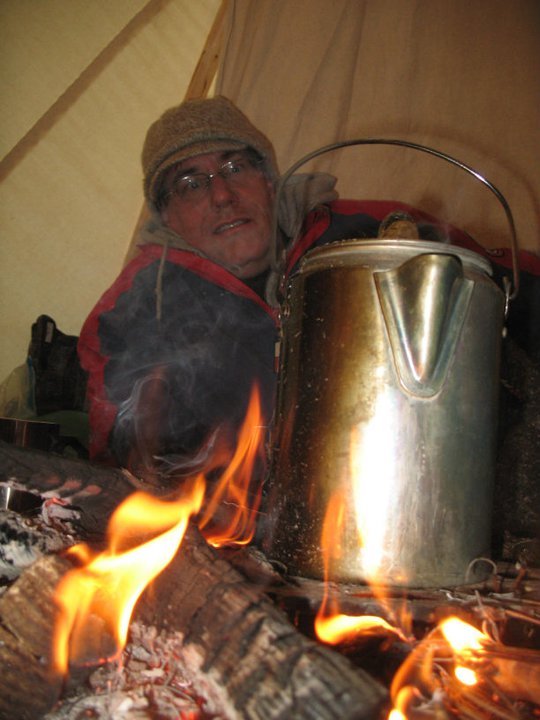

When the sun rose enough to warm our campsite, we moved the fire outside and I prepared breakfast. I had packed my eggs in the bag containing the cornmeal and was pleased to find they had survived the trip intact.
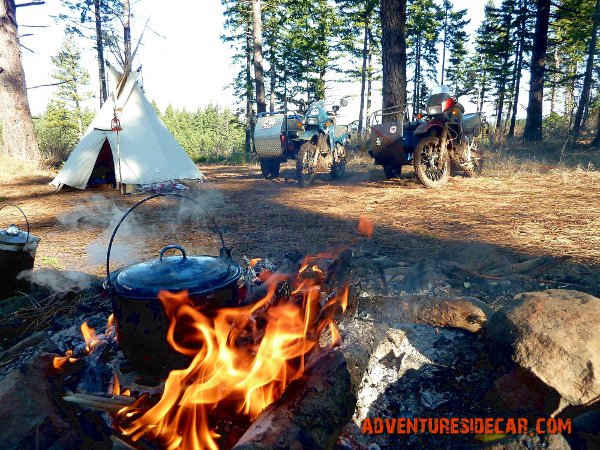
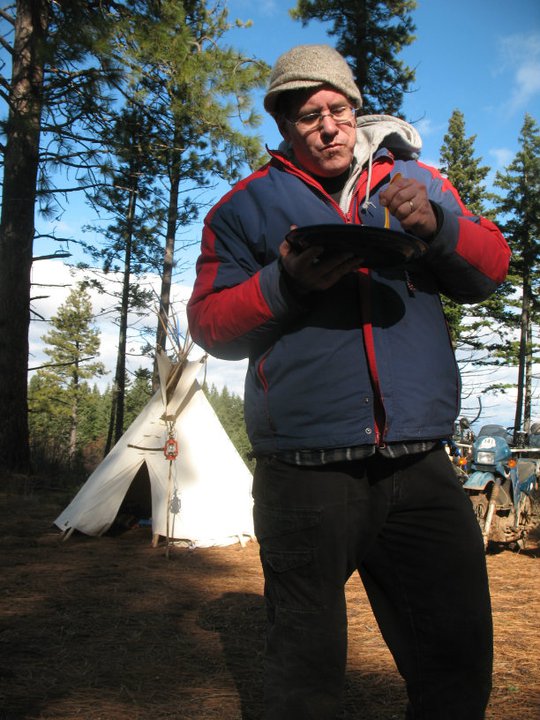

I soon had them frying over the fire. We stuffed ourselves with bacon and eggs, fried potatoes, and hoe cakes drenched in honey.

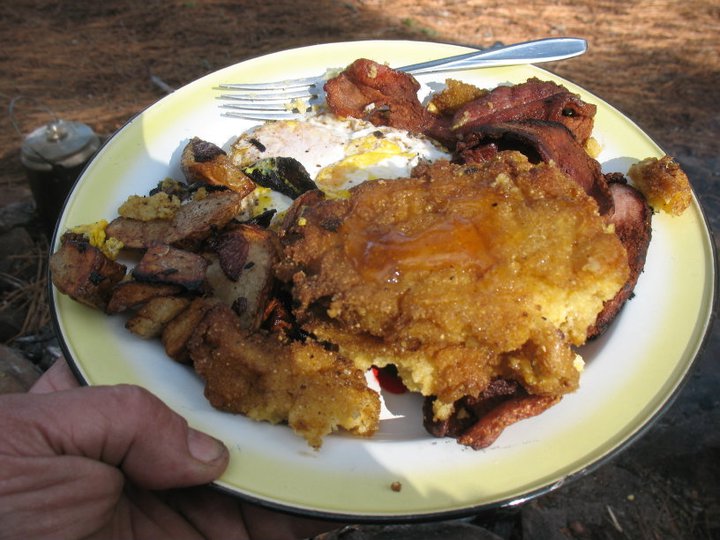

After breakfast we packed up and broke camp. It is always a challenge to fit everything back on the bike when it is time to go, and this trip was no exception. What fit so neatly when we started out, seems impossible to find space for when it is time to go. We managed it, though. This time I put the poles on butt forward, which proved to be a more secure arrangement. They did not loosen or slip and we made it home without incident, with enough memories of a winter camp to stave off cabin fever until spring.
This story first appeared in International Sidecar Traveller #43 April, 2019
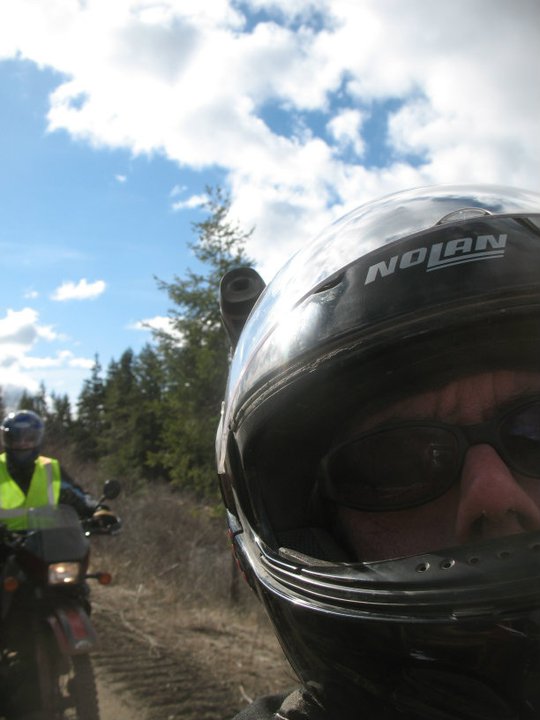


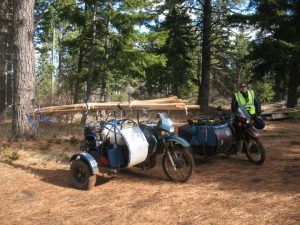
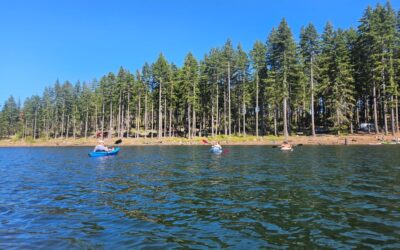
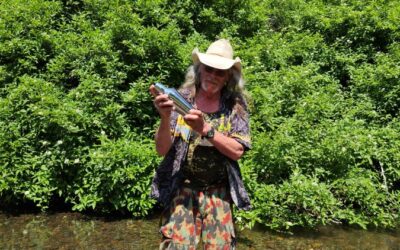
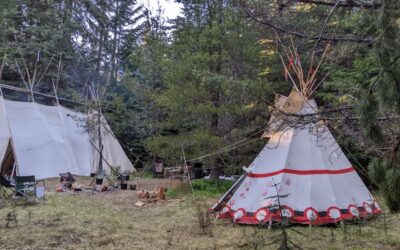

0 Comments